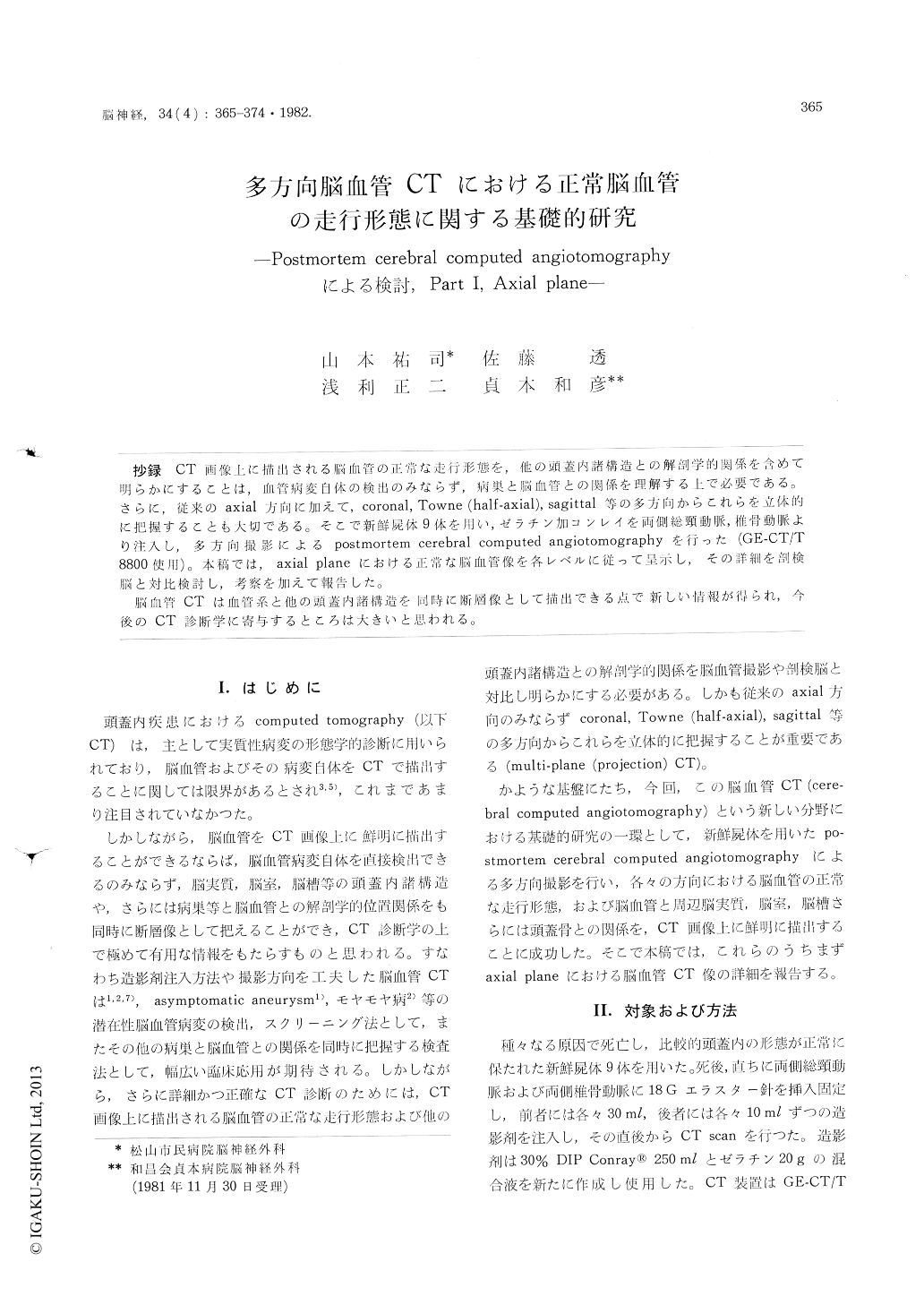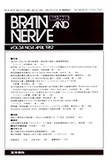Japanese
English
- 有料閲覧
- Abstract 文献概要
- 1ページ目 Look Inside
抄録 CT画像上に描出される脳血管の正常な走行形態を,他の頭蓋内諸構造との解剖学的関係を含めて明らかにすることは,血管病変自体の検出のみならず,病巣と脳血管との関係を理解する上で必要である。さらに,従来のaxial方向に加えて,coronal,Towne (half-axial),sagittal等の多方上向からこれらを立体的に把握することも大切である。そこで新鮮屍体9体を用い,ゼラチン加コンレイを両側総頸動脈,椎骨動脈より注入し,多方向撮影によるpostrmortem cerebral computed angiotomographyを行った(GE-CT/T8800使用)。本稿では,axial planeにおける正常な脳血管像を各レベルに従って呈示し,その詳細を剖検脳と対比検討し,考察を加えて報告した。
脳血管CTは血管系と他の頭蓋内諸構造を同時に断層像として描出できる点で新しい情報が得られ,今後のCT診断学に寄与するところは大きいと思われる。
Cranial computed tomography has been mainly used for detection of the parenchymal space-occupy-ing lesion, and has had the limitation of detection of the cerebrovascular lesion itself because of low CT resolution. However, high resolution CT scan-ners have recently brought us the possibility of definition of fine cerebral vessels on CT images using an appropriate injection method of contrast agents (cerebral computed angiotomography).
This paper concerns the normal anatomy of the cerebral vasculature on CT images using 9 fresh cadavers with normal intracranial structures. They received the postmortem injection of contrast agents through bilateral common carotid and vertebral arteries, and were undertaken the multiplane CT scanning with the axial, modified coronal, Towne (half-axial) and the semisagittal projections using GE-CT/T 8800 (9. 6 sec scanning time, 320 x 320 matrices). The normal anatomy of cerebral vessels on the axial plane, obtained at the levels 10 to 90 mm above the canthomeatal line, is presented in this paper.
Main visualized vessels in the posterior fossa were the basilar artery, the cranial loop of the PICA, the AICA from the origin to the hemi-spheric branches including the meatal loop in the cerebellopontine angle cistern, and the SCA from the ambient and quadrigeminal segments to the lateral marginal and superior hemispheric branches. The circle of Willis and other main cerebral ar-teries were clearly visualized with their small branches, for example, the posterior communicating,the anterior choroidal and the lenticulostriate ar-teries. Deep cerebral veins were also visualized at the levels of the midbrain, the middle and the roof of third ventricle, and the body of lateral ventricle. Postmortem cerebral computed angio-tomography provided us not only the precise anato-my of the cerebral vasculatures, but also their ana-tomic relations with the surrounding structuressuch as cerebral parenchyma, ventricles, cisterns and other subarachnoid spaces.
On the clinical point of view, cerebral computed angiotomography can be applied to the screening system of vascular lesions themselves such as as-ymptomatic aneurysms, arteriovenous malforma-tions, and Moyamoya disease.

Copyright © 1982, Igaku-Shoin Ltd. All rights reserved.


